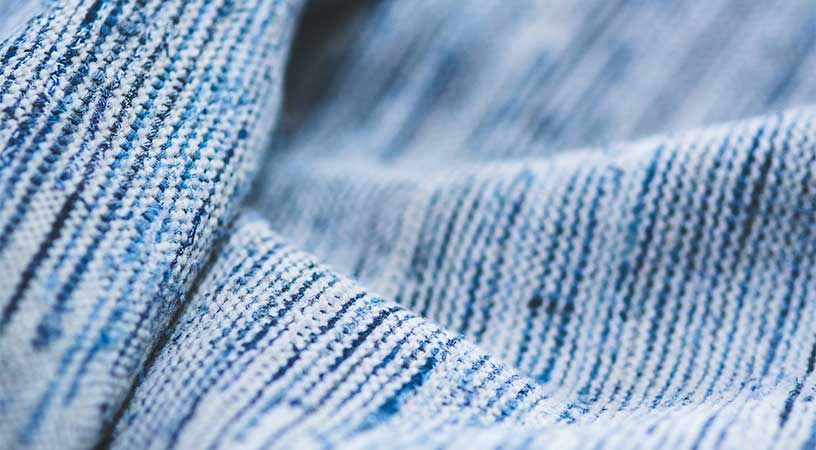The amount of water retention and usage in the textile industry is huge; from cleaning of raw material to the flushing steps in the production process. The wastewater that is then generated, needs to be filtered free from fat, oil, colour and other chemicals, after which it can be reused in different stages of production. Every enterprise generates different kinds of wastewater. Different companies use a variety of chemicals, and those who follow the environmental standards, try to keep the water clean in most steps of production. Treatment of textile wastewater must be done on a large scale, because of the several steps involved.
Primary and Secondary Treatment
The conventional treatment systems like physico-chemical treatment and physoco-chemical treatment, followed by biological treatment system are installed in majority of textile industries. The first step in wastewater treatment, is to mix and equalize the wastewater streams that are discharged at different times and different intervals from different stages in the processes. Some industries also prefer screening, oil trap prior to the equalization, for removal of solids, oil and grease. Equalization ensures that the effluents have uniform characteristics in terms of pollution load, pH and temperature. The effluent is then subject to flash mixing for the addition of coagulants such as lime, alum, ferrous sulphate, ferric chloride and polyelectrolyte. It is then processed through a clariflocculator or a flocculator and settling tank. Selection of appropriate coagulants and doses of chemicals are determined on the basis of treatability study of effluent samples. The chemical treatment helps in reduction of colour and suspended solids. A significant reduction in BOD and COD values is also observed. This physico-chemical treatment is followed by a biological treatment process, which further reduces BOD and COD values.
Tertiary Treatment
Textile effluents may require tertiary or advance treatment methods to remove particular contaminant or to prepare the treated effluent for reuse. Some common tertiary operations are removal of residual organic colour compounds by adsorption and removal of dissolved solids by membrane filtration. The wastewater is also treated with ozone or other oxidizing agent to destroy many contaminants. Evaporation and crystallization are other methods to minimize effluent disposal problems.
Advanced Methods for Treatment
-
Adsorption
The adsorption process is used to remove colour and other soluble organic pollutants from effluent. The process also removes toxic chemicals such as pesticides, phenols, cyanides and organic dyes that cannot be treated by conventional treatment methods. Dissolved organics are adsorbed on surface as wastewater containing these is made to pass through adsorbent. Most commonly used adsorbent for treatment is activated carbon.
-
Ion Exchange
The ion exchange process is normally used for the removal of inorganic salts and some specific organic anionic components such as phenol. All salts are composed of a positive ion of a base and a negative ion of an acid. Ion exchange materials are capable of exchanging soluble ions and cations with electrolyte solutions. Ion exchange resins are available in several types starting from natural zeolite to synthetics which may be phenolic, sulphonic styrenes and other complex compounds.
-
Membrane Filtration
-
Reverse Osmosis
The process of reverse osmosis is based on the ability of certain specific polymeric membranes to pass pure water at fairly high rates and to reject salts. To achieve this, water or wastewater stream is passed at high pressures through the membrane. The applied pressure has to be high enough to overcome the osmotic pressure of the stream. It also has to provide a pressure driving force for water to flow from the reject compartment through the membrane into the clear water compartment. -
Nanofiltration
Nanofiltration is essentially a lower pressure membrane where the purity of permeate water is less important. This process is used where the high salt rejection of reverse osmosis is not necessary. The nanofiltration is capable of removing hardness elements such as calcium or magnesium together with bacteria, viruses, and colour. Nanofiltration operates on lower pressure than reverse osmosis and as such treatment cost is lower than reverse osmosis treatment. Nanofiltration is preferred when it is necessary to permeate with TDS, without colour but COD and hardness is acceptable.
-
At Rochem India, we hold expertise over wastewater treatment systems for Textile Industries. Delivering specific requirements and needs for the multiple processes involved, we provide customisation of equipment that renders wastewater fit to discharge into the environment. Rely on us for efficient wastewater treatment and systems.
We offer excellent water treatment and recycling technology that adapts to the changing needs of our customers. Get in touch with us through our mail at sales@rochemindia.net, or leave a message on our social media accounts - Facebook, Instagram, LinkedIn and YouTube or call us on +91 (22) 6704 9000 for any enquiries and further information.

